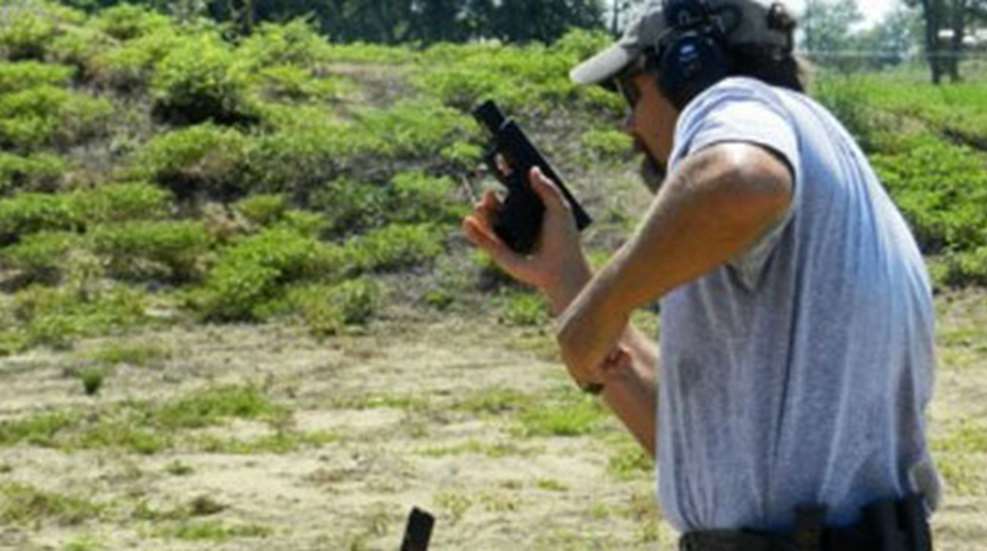
The absolute worst time to run out of ammo is during a gunfight, so it is critical for folks to learn how to reload efficiently and train regularly. In an effort to keep this clear, concise and to the point, let me begin with a few principles concerning semi-automatic handgun reloading.
First, always carry a reload—magazines can wear out, break, fall out and/or may be lost. If you only have one gun, make sure you have plenty of rounds for it.
Next, the gun will be in one of two conditions when you reload—the slide will be forward, or it will be held to the rear by the slide-lock. There are also two categories of reloading, one where you retain the magazine that was in the gun and another where you let it fall free and discard it.
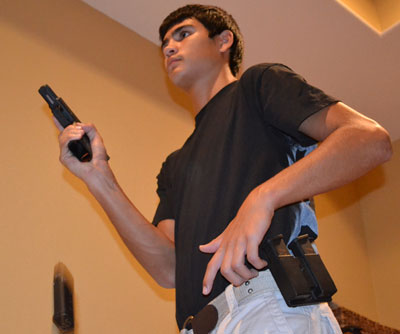
This primer addresses the latter of both: the gun is empty, the slide is locked to the rear, and the old magazine will not be retained. The shooter also has the use of both hands.
When it is time to reload, three things need to happen at once: The gun needs to be brought toward the shooter, the old magazine needs to be removed from the gun and the support hand needs to move to the spare magazine.
A simple technique to aid in moving the gun closer to the body is to bend the shooting arm so the elbow contacts the body while keeping the muzzle elevated. This puts the gun in an better position ergonomically (as opposed to keeping it at arm's length) and keeps the front sight close to the line-of-sight to the target. This position also moves the empty gun closer to the source of more ammo—the new magazine, which should be held in an accessible pouch. At all times, the shooter's eyes should remain on the target.
At the same time you move the gun closer to your body, depress the magazine-release button (or lever) with the strong thumb. Some shooters with smaller hands or those using a larger pistol may need to slightly twist gun in the hand in order to fully depress the magazine-release. Then, let gravity do its job—don't tilt or shake the gun too much. Added friction will only retard the movement of the empty magazine from the mag well.
Get rid of the empty—let it hit the floor. If it does not fall free, simply use the back of the new magazine to strip it out. If the design of your gun does not allow for that procedure, use a finger to extract the old mag.
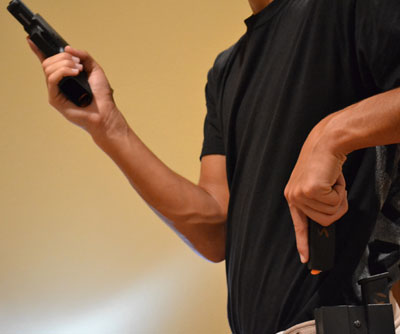
While these two acts are being performed with the strong hand, the support hand should be moving to secure the new magazine from its pouch. When grabbing the fresh mag, the index finger should be extended along the front of the magazine pointing toward the tip of the first bullet, the baseplate should be in contact with the palm at the base of the index finger and the thumb and middle finger should be pinching the bottom portion of the new magazine.
As the fresh magazine nears the mag well, a quick glance down will aid in introducing the new mag into the gun. I recommend training on this step until you can do it reliably without looking at the mag well—in the dark or while searching for or moving to cover, your eyes may serve you better when focused elsewhere.
Firmly seat the magazine with the palm of the support hand, flattening the hand as it pushes the magazine into the well. The slide should not consistently go forward automatically. On compact guns or for people with large hands, make sure the strong hand does not interfere with seating the magazine. When reloading my Glock G26, I must remove the pinky and ring finger from the grip to make sure the magazine can be fully seated, and also to avoid pinching the palm of my hand between the baseplate and the grip.
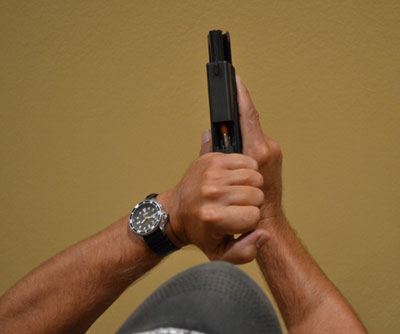
There are several methods for releasing the slide. Different models of handgun may require different techniques. Depressing the slide-stop with either the firing-hand thumb or support thumb is probably the fastest—especially if your gun has an adequate factory or aftermarket slide-stop lever.
If the gun has a small lever, it will be more reliable, albeit slightly slower, to use the "slingshot" method, unless you have a slide-mounted safety. The "handover" is another viable option, as long your hand doesn't cover the ejection port. I have seen many instances where the shooter accidentally placed the gun on "safe" or decocked it when using the handover or slingshot methods on pistols like the Berretta M9 or a Makarov with a safety/de-cocker on the slide.
Once the slide is forward, reacquire a solid, two-handed grip, and continue to shoot as needed.
Two areas are the most contentious: where the gun should be held and how to release the slide. Some prefer the gun higher, with the magwell at or near eye level. Others prefer it lower, with the front sight near eye level. I think everyone agrees the gun needs to be brought back near the body, though. I prefer the front sight at eye level, as this moves the gun closer to the ammo and does not block my vision.
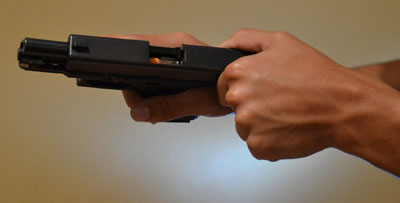
There are also pros and cons for each method of releasing the slide. I use the slide-stop lever on Beretta M9s and 1911s, but slingshot my Glocks. It really does not matter which style you chose, as long as you train using your chosen method(s). Pick one method as your primary based on your gun and your hand size, but train with the other methods in case you need them. Then, practice standing, kneeling, sitting, crouching, running, prone, on your back, on your side, with a flashlight, with only one hand, day and night. Only then will you be ready.






































